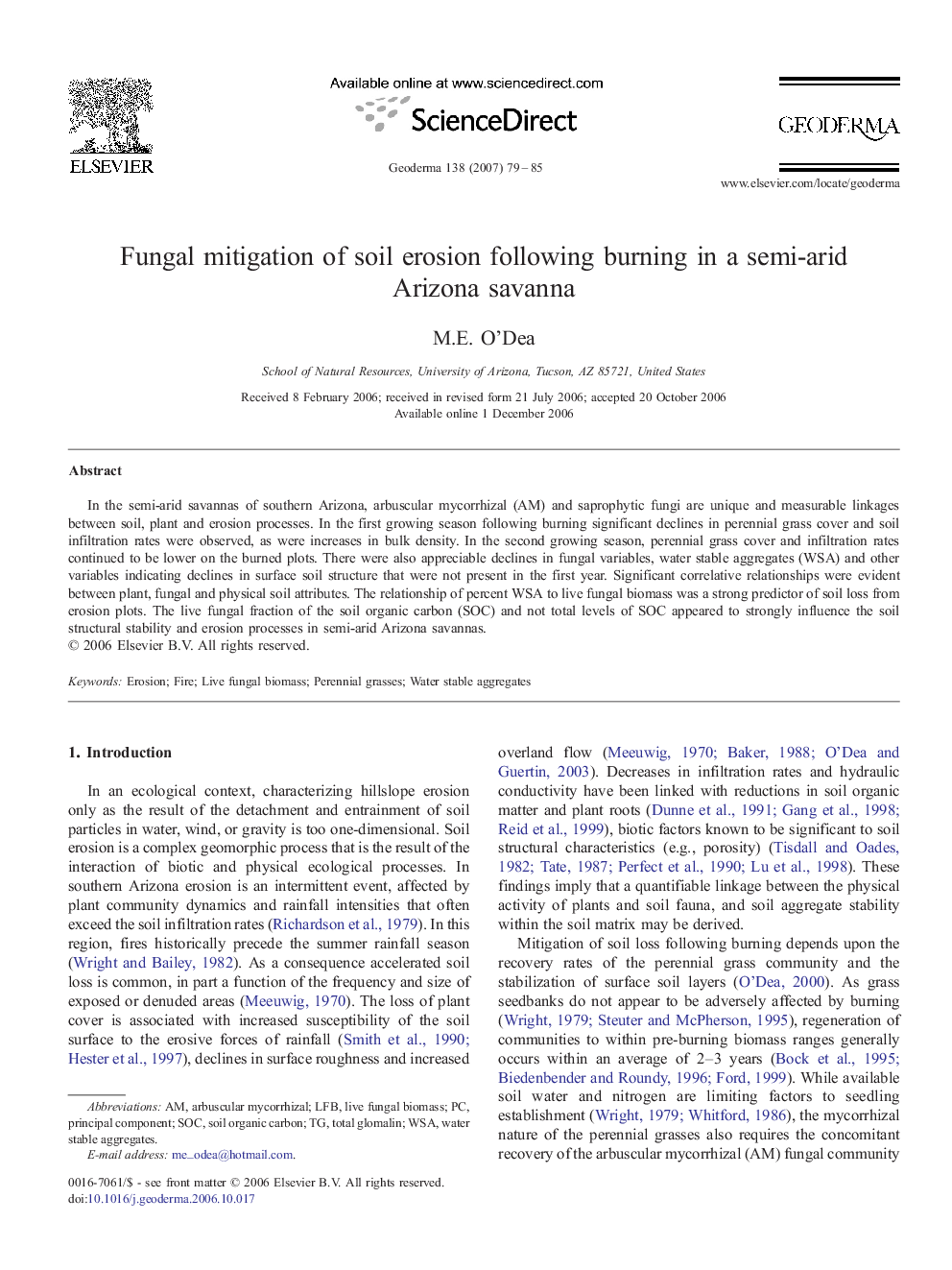| Article ID | Journal | Published Year | Pages | File Type |
|---|---|---|---|---|
| 4575376 | Geoderma | 2007 | 7 Pages |
In the semi-arid savannas of southern Arizona, arbuscular mycorrhizal (AM) and saprophytic fungi are unique and measurable linkages between soil, plant and erosion processes. In the first growing season following burning significant declines in perennial grass cover and soil infiltration rates were observed, as were increases in bulk density. In the second growing season, perennial grass cover and infiltration rates continued to be lower on the burned plots. There were also appreciable declines in fungal variables, water stable aggregates (WSA) and other variables indicating declines in surface soil structure that were not present in the first year. Significant correlative relationships were evident between plant, fungal and physical soil attributes. The relationship of percent WSA to live fungal biomass was a strong predictor of soil loss from erosion plots. The live fungal fraction of the soil organic carbon (SOC) and not total levels of SOC appeared to strongly influence the soil structural stability and erosion processes in semi-arid Arizona savannas.
